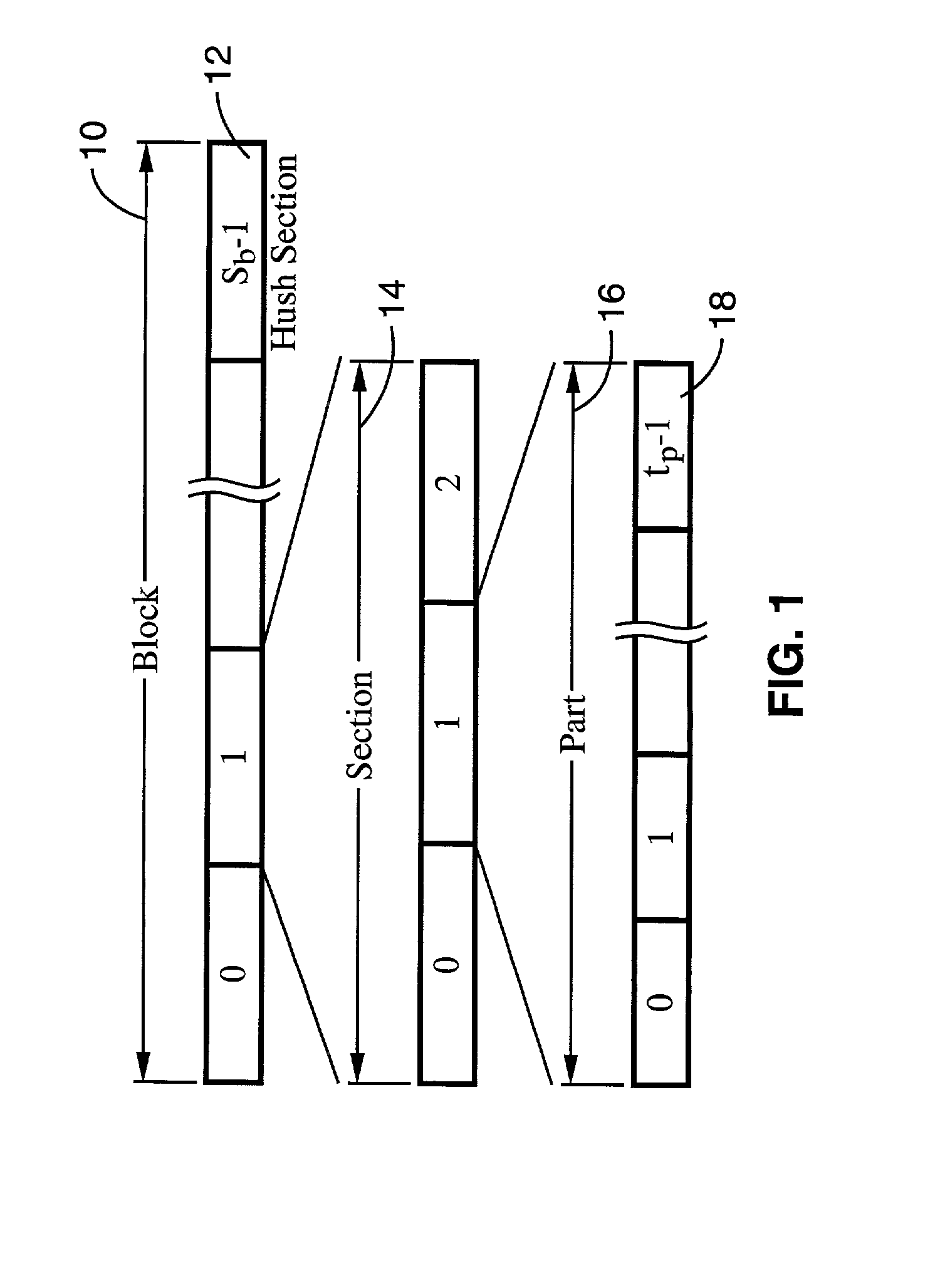System and method for ad hoc network access employing the distributed election of a shared transmission schedule
a transmission schedule and distributed election technology, applied in the field of ad hoc networking, can solve the problems of time division multiplexing (tdm, np-complete problem, technique suffers from a considerable amount of overhead, etc., and achieve the effect of more control over the share of channels
- Summary
- Abstract
- Description
- Claims
- Application Information
AI Technical Summary
Benefits of technology
Problems solved by technology
Method used
Image
Examples
Embodiment Construction
[0040]Referring more specifically to the drawings, for illustrative purposes the present invention is embodied in the apparatus generally shown in FIG. 1 through FIG. 14. It will be appreciated that the apparatus may vary as to configuration and as to details of the parts, and that the method may vary as to the specific steps and sequence, without departing from the basic concepts as disclosed herein.
1. Introduction
[0041]A topology-dependent TDMA method and system that automatically schedules collision-free channel access at each node without requiring repetitious contention phase(s) when a node requires channel access. One of the requirements for the present method is that each node obtain, or maintain, topology information regarding local neighbors, such as those neighbors within a two-hop distance. It will be appreciated that one-hop neighbors comprise neighbors joined by a single link while two-hop neighbors have a common one-hop neighbor. Channel bandwidth is substantially devo...
PUM
 Login to View More
Login to View More Abstract
Description
Claims
Application Information
 Login to View More
Login to View More - R&D
- Intellectual Property
- Life Sciences
- Materials
- Tech Scout
- Unparalleled Data Quality
- Higher Quality Content
- 60% Fewer Hallucinations
Browse by: Latest US Patents, China's latest patents, Technical Efficacy Thesaurus, Application Domain, Technology Topic, Popular Technical Reports.
© 2025 PatSnap. All rights reserved.Legal|Privacy policy|Modern Slavery Act Transparency Statement|Sitemap|About US| Contact US: help@patsnap.com



